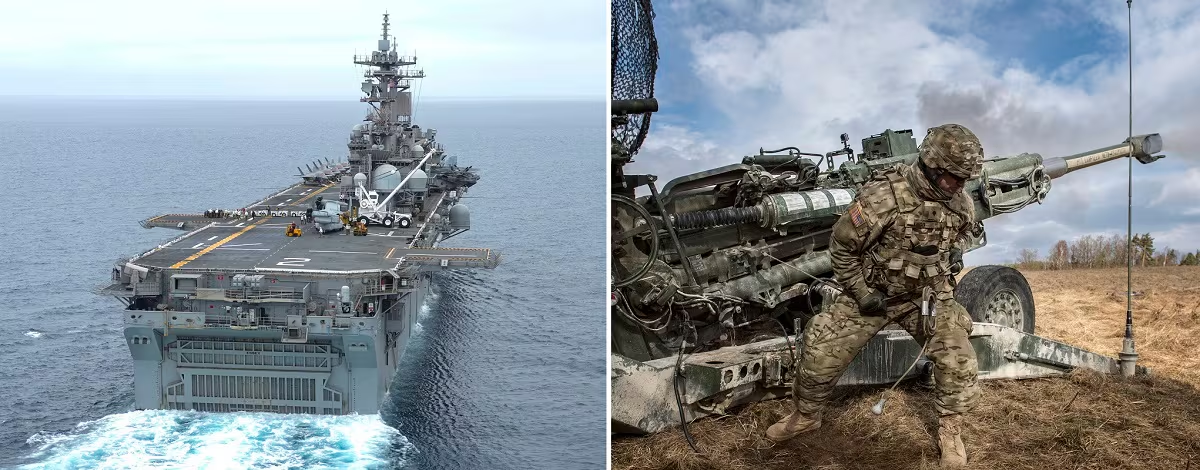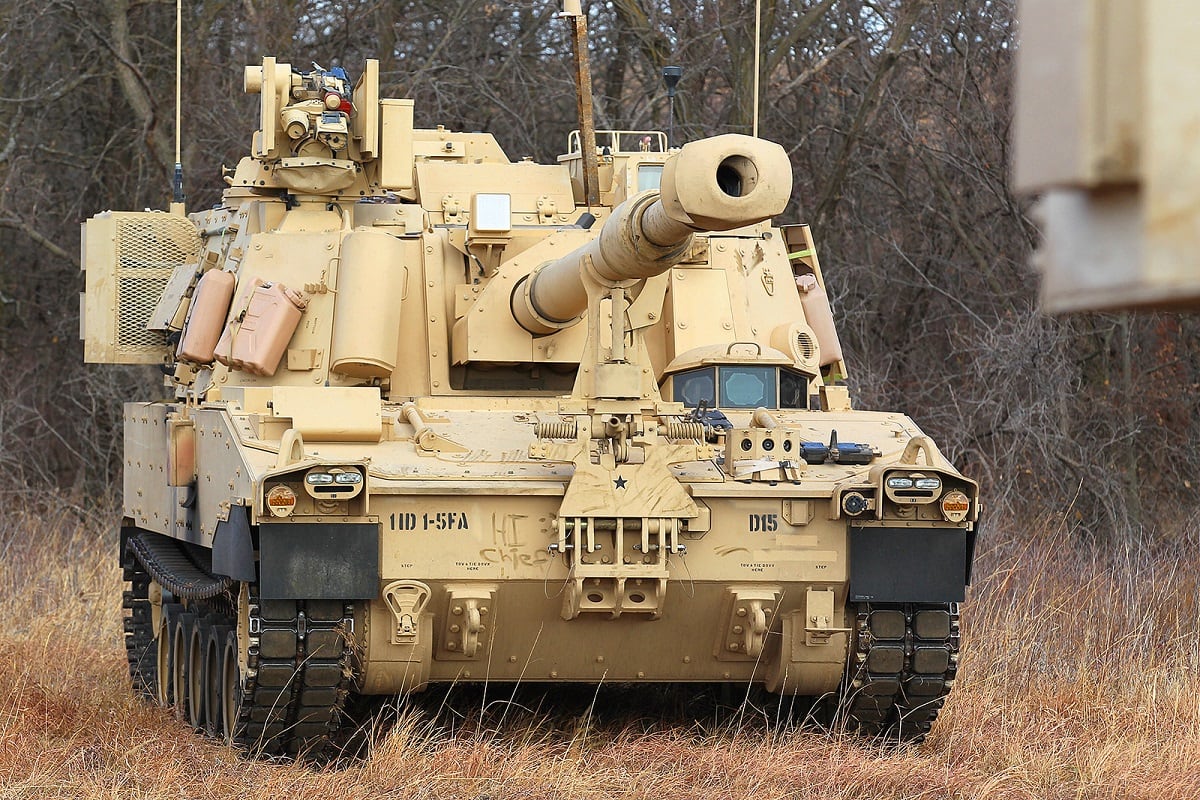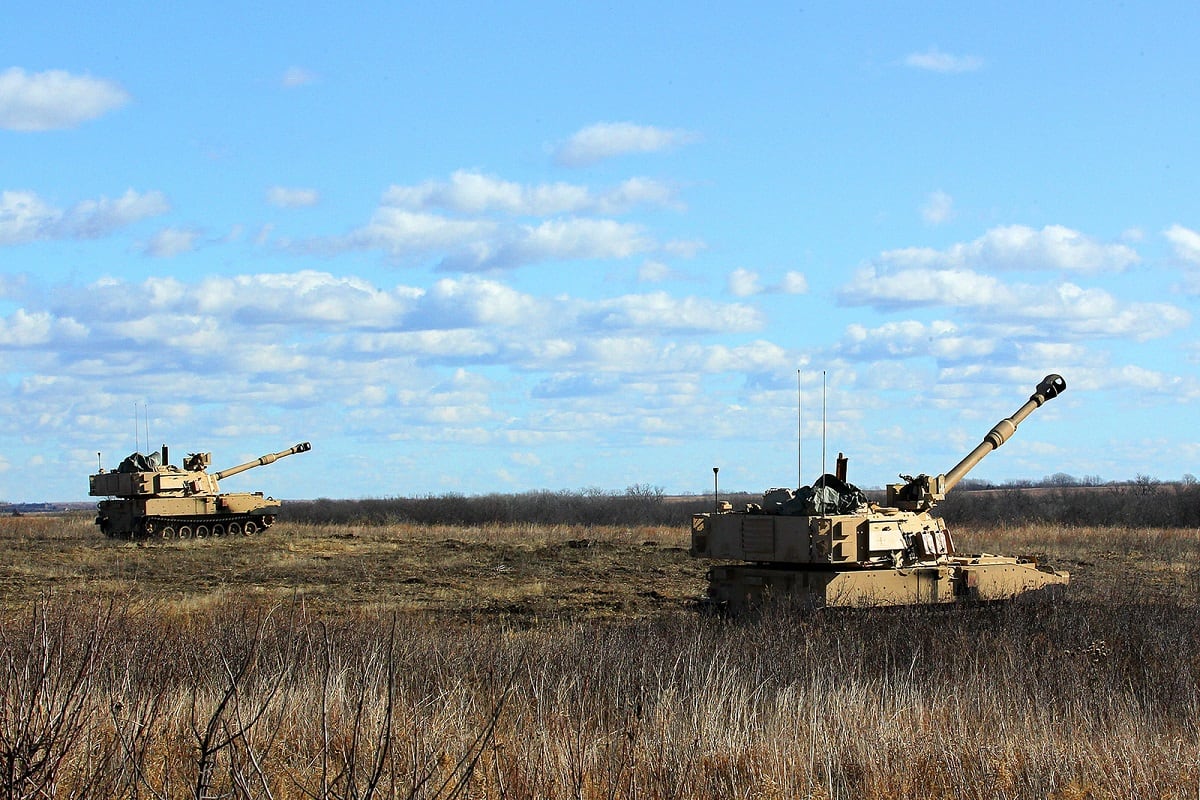Cannon-cockers with the 1st Infantry Division’s “Bonecrusher” Battery fired hundreds of artillery rounds a day for two weeks straight as they tested the Army’s newest upgrades to the Paladin howitzer.
And some of the soldiers in the battery who participated called it the most “intense and exhilarating” training they’ve experienced.
Capt. Joseph Brown, battery commander with B Company, 1st Battalion, 5th Field Artillery Regiment, 1st Armored Brigade Combat Team said the training was conducted much like what the soldiers would see at the National Training Center in Fort Irwin, California — even though they were at Fort Riley, Kansas, the unit’s home station.
The soldiers started the testing with a muster and move to the field, and then they started firing for almost 20 hours a day in “near continuous operations over the course of the next two weeks.”
RELATED

The upgrades and training fall closely in line with priorities, outlined under Army modernization efforts, to increase long-range fires and make soldiers more lethal through increased training.
“In testing for the readiness of the vehicle, [it] made my section more efficient in artillery,” said Staff Sgt. James Glover, a section chief. “The amount of rounds we shot … I seriously doubt I’ll see that again.”
The soldiers couldn’t disclose the exact number of rounds fired from their new M109A7 Self-Propelled 155mm Paladin Howitzers, but they said that it was more than many had ever fired in training or combat.
“We’re not going to get anything like that unless we went to actual combat,” said Staff Sgt. Brett Boger, a section chief with Company B.
Changes to the Paladin helped take some stress off the soldiers during the demanding field testing, they said.
Upgrades include changes to the interior that automates some of the procedures, allowing more rounds to be fired faster and at a higher rate than with the manual systems on previous versions.

Developers also have increased the exterior armor, which offers more protection but also dampens the noise and reduces the “blast overpressure” — the shock wave produced by firing the 155mm round.
Boger said that improvements to the hatch help the driver navigate better in both daytime and nighttime operations.
“The advantage of the A7 is less stress on the soldier, easier to move rounds, which creates a faster crew, which is important to putting rounds downrange, especially when you have fire missions that require such speed,” Boger said.

A crew of four soldiers — driver, gunner, commander and loader — operate the vehicle. The system can fire a round in under 60 seconds.
Lt. Col. Richard Ikena, deputy commander of the 1st ABCT, said “the battlefield is fluid and rapidly evolving,” and the efficiency upgrades help makes the artillery, a main support of the brigade, more combat ready.
Beyond the structural upgrades to the system itself, the Army is also looking to extend the Paladin’s range, using a better projectile, such as the XM1113, in the next two and a half years, according to Army Times’ sister publication, Defense News.
Todd South has written about crime, courts, government and the military for multiple publications since 2004 and was named a 2014 Pulitzer finalist for a co-written project on witness intimidation. Todd is a Marine veteran of the Iraq War.



